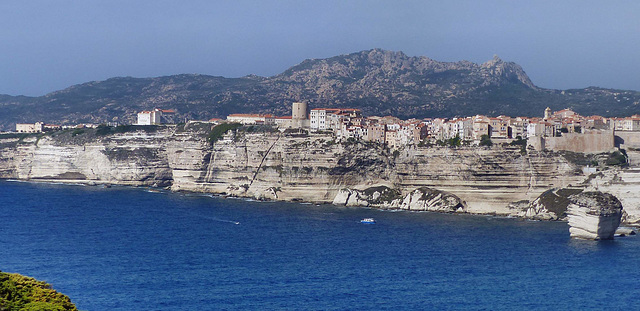Enna - Maria Santissima della Visitazione
Enna - Maria Santissima della Visitazione
Marseille - Palais de la Bourse
Marseille - Hôtel Louvre et Paix
Marseille - Canebière
Marseille - Porte d’Aix
Marseille - La Maison Empereur
Marseille - La Chapellerie Marseillaise
Marseille - Destockage
Marseille - Torrefaction Noailles
Marseille - Notre-Dame de la Garde
Marseille - Villa Méditerranée / Grotte Cosquer
Marseille - Cathédrale Sainte-Marie-Majeure
Marseille - Cathédrale Sainte-Marie-Majeure
Marseille - Cathédrale Sainte-Marie-Majeure
Marseille - Cathédrale Sainte-Marie-Majeure
Marseille - Cathédrale Sainte-Marie-Majeure
Location
See also...
Keywords
Authorizations, license
-
Visible by: Everyone -
All rights reserved
-
195 visits
Bonifacio


The island of Corsica is one of the 18 regions of France. It was colonized the Carthaginians, the Greeks, the Etruscans and the Romans. After the Roman empire collapsed, Corsica got invaded by the Vandals and the Ostrogoths. For a short while the island belonged to the Byzantine Empire, then the Franks granted the island to the Pope, in the early 11th century Pisa and Genoa together freed the island from the threat of Arab invasion. The island came under the influence of the Republic of Pisa, later it belonged to Genua for centuries. In 1755 after a long fight for independence from Genoa the independent Corsican Republic was proclaimed, but in 1769, when the island was conquered by France. As the areas near the coast over centuries have been threatened by attacks and raids of pirates many old hamlets and dwellings are wide inland, high in the mountains.
Bonifacio is the southernmost town on the island of Corsica. The town is divided into into two areas: the medieval old town ("ville haute") and the marina in the harbour area. The upper town is located on a 900-metre-long, narrow tongue of lime- and sandstone land parallel to the coast. On its seafront the promontory slopes from a height of about 70 metres perpendicular to the sea. On the land side, a fjord-like bay is cut into the limestone, forming a well-protected natural harbour. The unique location has repeatedly made Bonifacio the center of military conflict, so over the centuries it was built into a massive fortress. Seen near the tower is a diagonal black line.
This is the "Escalier du roi d'Aragon" ("Staircase of King of Aragon"). The staircase is composed by 187 steps carved into the cliff with an inclination of approximately 45°.
A local legend tells, that in 1420 Alfonso V of Aragon had this stairs built by his troops in only one night. It took probably longer than that but may be created to cut off Bonifacio from a drinkig water during the fifve months long siege. The Genoese colony resisted the siege
Bonifacio is the southernmost town on the island of Corsica. The town is divided into into two areas: the medieval old town ("ville haute") and the marina in the harbour area. The upper town is located on a 900-metre-long, narrow tongue of lime- and sandstone land parallel to the coast. On its seafront the promontory slopes from a height of about 70 metres perpendicular to the sea. On the land side, a fjord-like bay is cut into the limestone, forming a well-protected natural harbour. The unique location has repeatedly made Bonifacio the center of military conflict, so over the centuries it was built into a massive fortress. Seen near the tower is a diagonal black line.
This is the "Escalier du roi d'Aragon" ("Staircase of King of Aragon"). The staircase is composed by 187 steps carved into the cliff with an inclination of approximately 45°.
A local legend tells, that in 1420 Alfonso V of Aragon had this stairs built by his troops in only one night. It took probably longer than that but may be created to cut off Bonifacio from a drinkig water during the fifve months long siege. The Genoese colony resisted the siege
- Keyboard shortcuts:
Jump to top
RSS feed- Latest comments - Subscribe to the comment feeds of this photo
- ipernity © 2007-2024
- Help & Contact
|
Club news
|
About ipernity
|
History |
ipernity Club & Prices |
Guide of good conduct
Donate | Group guidelines | Privacy policy | Terms of use | Statutes | In memoria -
Facebook
Twitter

Sign-in to write a comment.